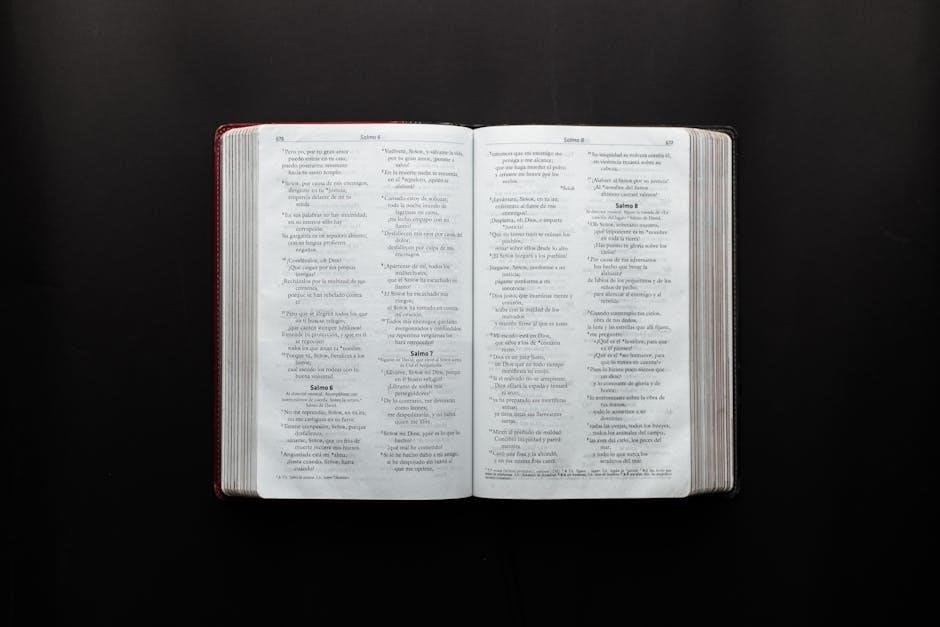Sadako and the Thousand Paper Cranes, by Eleanor Coerr, tells the poignant story of Sadako Sasaki, a young Hiroshima girl diagnosed with leukemia. Available as a PDF, the book highlights her resilience through the legend of folding 1,000 paper cranes, symbolizing hope and peace. The story has inspired adaptations, including a 1991 short film, making it a timeless tale of courage and anti-war advocacy.
1.1 Overview of the Book
Sadako and the Thousand Paper Cranes, written by Eleanor Coerr, is a heartrending tale of Sadako Sasaki, a young girl diagnosed with leukemia after the Hiroshima bombing. The story revolves around her determination to fold 1,000 paper cranes, inspired by a Japanese legend promising healing and longevity. This children’s historical fiction book, first published in 1977, educates readers about the consequences of war while emphasizing hope and resilience. Available as a PDF, it remains a powerful tool for teaching children about peace and the impact of war on innocent lives, making it a timeless and poignant read.
1.2 Historical Context
The book is set against the backdrop of the atomic bombing of Hiroshima in 1945, which devastated the city and exposed thousands to radiation. Sadako Sasaki, the protagonist, was just two years old during the bombing and later developed leukemia, a disease linked to radiation exposure. The story highlights the long-term effects of the bombing and the suffering of innocent civilians, particularly children. The historical context underscores the horrors of war and the enduring impact on survivors. The PDF version of the book provides a vivid account of this tragic period, making it a valuable resource for understanding Hiroshima’s history and its legacy.
Author Background: Eleanor Coerr
Eleanor Coerr, an American author, wrote Sadako and the Thousand Paper Cranes, bringing global attention to Sadako Sasaki’s story and its powerful message of peace and resilience.

2.1 Eleanor Coerr’s Biography
Eleanor Coerr was an American author, best known for writing Sadako and the Thousand Paper Cranes in 1977. Born in the United States, Coerr developed a deep interest in Japanese culture, which inspired her to tell Sadako Sasaki’s story. Her work brought global attention to the young girl’s courage and the legend of the paper cranes. Coerr’s writing often focused on historical and cultural themes, making her a respected figure in children’s literature. Her book has been translated into multiple languages and remains a significant educational resource, fostering peace awareness and empathy worldwide.
2.2 Inspiration Behind the Book
Eleanor Coerr was deeply moved by Sadako Sasaki’s story and the legend of the paper cranes, which symbolized hope and healing. Inspired by Sadako’s courage and resilience, Coerr aimed to share her story globally, highlighting the impact of war on innocent lives. The book was also influenced by Coerr’s interest in Japanese culture and her desire to promote peace. By weaving historical facts with emotional depth, Coerr created a timeless narrative that continues to inspire readers. The PDF version of the book ensures accessibility, allowing new generations to learn from Sadako’s legacy and the importance of striving for peace.

Sadako Sasaki: The Real-Life Heroine
Sadako Sasaki, a young Hiroshima girl, became a symbol of peace after her courageous battle with leukemia. Her story, immortalized in Eleanor Coerr’s book, highlights resilience and hope.

3.1 Sadako’s Early Life
Sadako Sasaki was born on January 7, 1943, in Hiroshima, Japan, to a close-knit family. She grew up in a peaceful environment, surrounded by loving parents and siblings. Sadako was known for her lively spirit, athletic abilities, and kindness. She excelled in sports, particularly running, and was a star athlete at her school. Her early life was filled with joy and normalcy, far removed from the tragic events that would later shape her story. Sadako’s family, especially her older brother Masahiro, played a significant role in her life, providing support and love during her formative years.
3.2 Sadako’s Illness and the Paper Crane Legend

Sadako Sasaki was diagnosed with leukemia at age 12, a result of radiation exposure from the Hiroshima bombing. During her illness, she learned of a Japanese legend: folding 1,000 paper cranes could grant a wish, such as recovery. Inspired, Sadako began folding cranes, hoping to overcome her sickness. Despite her frailty, she surpassed her goal, creating over 1,450 cranes. This act of resilience became a symbol of hope and peace. Her story, detailed in Eleanor Coerr’s book, has inspired global peace movements and the tradition of folding cranes to honor her memory and advocate for a world without war.
Plot Summary
Sadako Sasaki, a vibrant girl, faces leukemia after the Hiroshima bombing. She discovers the crane legend, folding over 1,000 cranes, embodying hope and peace, leaving a lasting legacy.
4.1 Sadako’s Diagnosis and Initial Struggles
Sadako Sasaki, an 11-year-old girl from Hiroshima, is diagnosed with leukemia, a devastating consequence of radiation exposure from the atomic bomb. Initially, she struggles to accept her fate, feeling hopeless and scared. Her vibrant spirit is dampened by the harsh reality of her illness. Despite her fears, Sadako finds solace in the legend of the thousand paper cranes, which promises healing and longevity. With the support of her family, she begins folding cranes, clinging to the hope they represent. Her journey is marked by resilience, as she confronts the physical and emotional challenges of her condition.
4.2 The Legend of the Thousand Paper Cranes
The legend of the thousand paper cranes, a traditional Japanese belief, promises that folding 1,000 cranes grants a wish, such as recovery from illness or world peace. Inspired by this legend, Sadako dedicated herself to creating the cranes despite her weakening condition. She surpassed her goal, folding approximately 1,450 cranes, which became a powerful symbol of hope and resilience. Today, people worldwide fold cranes in her honor, often placing them at her statue in Hiroshima Peace Memorial Park. This tradition continues to spread messages of peace and unity, ensuring Sadako’s legacy endures as a beacon of hope.
4.3 Sadako’s Death and Legacy
Sadako Sasaki passed away on October 25, 1955, at just 12 years old, her life cut short by leukemia caused by radiation exposure. Her death deeply saddened her family and community, but her legacy endured. The book and her story inspired a global movement for peace, with thousands folding paper cranes in her honor. Today, Sadako’s statue in Hiroshima stands as a symbol of hope, and her story, available in PDF, continues to educate and inspire. Her courage and determination remain a powerful reminder of the impact one life can have on the world, fostering peace and unity across generations.

Themes in the Book
The book explores themes of hope, resilience, and peace, highlighting the impact of war on innocence and the power of courage in the face of adversity.

5.1 Hope and Resilience
Sadako’s story embodies the themes of hope and resilience as she faces leukemia with courage. The legend of the thousand paper cranes becomes a symbol of her determination to recover, inspiring others. Despite her illness, Sadako’s spirit remains unbroken, reflecting the strength of the human will. The book highlights how hope sustains her through her darkest days, offering a powerful message of perseverance. Her journey shows that even in adversity, hope can transform suffering into a beacon of light, inspiring others to find strength in their own challenges. The PDF version of the book shares this timeless message globally, emphasizing the power of hope and resilience.
5.2 Peace and Anti-War Messages
The book conveys powerful peace and anti-war messages through Sadako’s story. Her wish for peace, symbolized by the paper cranes, highlights the devastating effects of war on innocent lives. The tradition of folding cranes, now a global symbol of peace, emphasizes the importance of non-violence and unity. The PDF version of the book shares this message widely, inspiring readers to reflect on the consequences of war and the need for global harmony. Sadako’s legacy continues to advocate for peace, reminding future generations of the importance of promoting understanding and avoiding conflict. Her story remains a timeless call for peace worldwide.
5.3 The Impact of War on Innocence
Sadako’s story vividly illustrates the impact of war on innocence. At just 11 years old, she faced the devastating consequences of the atomic bomb, contracting leukemia. Her struggle symbolizes the suffering of countless children affected by war, highlighting their vulnerability. The book underscores how war disrupts young lives, robbing them of childhood and hope. Sadako’s determination to fold paper cranes, even in illness, reflects the resilience of innocent victims. The PDF version of the story shares this poignant message, reminding readers of the profound effects of conflict on the youngest and most vulnerable members of society. War’s scars linger long after the bombs fall.

Historical Context: Hiroshima and the Atomic Bomb
The atomic bombing of Hiroshima on August 6, 1945, caused widespread destruction and radiation exposure. Sadako Sasaki, exposed as a baby, later developed leukemia, highlighting the bomb’s lasting impact. The PDF version of the book details her story, emphasizing the tragic consequences of war and nuclear devastation on innocent civilians.
6.1 The Bombing of Hiroshima
On August 6, 1945, Hiroshima was devastated by the atomic bomb “Little Boy,” dropped by the U.S. The explosion caused massive destruction, killing thousands instantly. A blinding flash and thermal waves razed the city, leaving survivors with severe injuries. Sadako Sasaki, just a baby, was exposed to radiation, later developing leukemia. The bombing marked a tragic turning point in history, highlighting the horrors of nuclear warfare. The PDF version of Eleanor Coerr’s book vividly portrays this event, emphasizing its impact on Sadako’s life and the broader message of peace it inspired. The bombing remains a stark reminder of war’s devastating consequences.
6.2 The Aftermath and Effects of Radiation
The atomic bombing of Hiroshima left survivors exposed to radiation, causing severe health issues. Sadako Sasaki, a young girl, developed leukemia years later, a direct result of radiation exposure. The PDF version of Eleanor Coerr’s book details her struggle with the disease, highlighting the long-term effects of radiation. Many survivors suffered from similar illnesses, leading to increased awareness of nuclear warfare’s consequences; The aftermath also brought emotional trauma, shaping Hiroshima’s collective memory. Sadako’s story, symbolized by her paper cranes, became a powerful symbol of peace and resilience, inspiring global anti-war movements and educating future generations about the horrors of nuclear weapons.
Cultural Impact of the Book
The book inspired a global tradition of folding paper cranes, symbolizing peace. A statue of Sadako in Hiroshima stands as a memorial, with visitors placing cranes. The PDF version spreads her story, fostering anti-war awareness and unity, ensuring her legacy endures as a symbol of hope and peace worldwide.
7.1 The Statue of Sadako in Hiroshima
A statue of Sadako Sasaki stands in Hiroshima Peace Memorial Park, symbolizing her enduring legacy. Visitors from around the world place thousands of paper cranes at the statue, especially on August 6, Hiroshima Peace Day. The statue depicts Sadako holding a giant paper crane, embodying her wish for peace and healing. The base of the statue bears an inscription: “This is our cry, this is our prayer; peace in the world.” The statue has become a powerful symbol of hope and nuclear disarmament, inspiring global peace efforts and reminding visitors of the tragic consequences of war.
7.2 The Tradition of Folding Paper Cranes
The tradition of folding paper cranes, inspired by Sadako Sasaki, has become a global symbol of peace and hope. Sadako folded over 1,450 cranes, exceeding her goal of 1,000, while battling leukemia. Today, people worldwide fold cranes in her honor, often placing them at her statue in Hiroshima. This practice, rooted in Japanese culture, represents wishes for healing, peace, and nuclear disarmament. Schools and communities adopt this tradition to teach children about Sadako’s story and promote anti-war awareness. The paper crane has evolved into a universal emblem of humanity’s collective desire for a peaceful world, transcending cultural boundaries.

Educational Significance
Sadako and the Thousand Paper Cranes is widely used in schools to teach empathy, historical context, and peace advocacy. Its accessible narrative makes it a powerful educational tool.
8.1 Use in Schools and Curriculum
Sadako and the Thousand Paper Cranes is widely integrated into school curriculums, particularly in language arts and history classes, to teach empathy and historical awareness. The book’s accessible narrative makes it ideal for middle-grade students, fostering discussions on peace, resilience, and the impact of war; Educators often pair it with study guides and resources, such as PDF worksheets, to deepen understanding. The story’s universal themes align with multicultural education goals, encouraging students to reflect on global issues. Its inclusion in programs like Sonlight Curriculum highlights its educational value, making it a powerful tool for teaching compassion and historical context.
8.2 Study Guides and Resources
Various study guides and resources accompany Sadako and the Thousand Paper Cranes, enhancing educational engagement. These include PDF worksheets, discussion questions, and activities that explore themes like peace and resilience. Teachers use these tools to deepen students’ understanding of the story. Resources such as SparkNotes provide concise summaries and analysis, aiding comprehension. Additionally, the book is supported by interactive materials, like digital slides, for classroom use. These resources are designed to align with curriculum goals, making the story accessible and impactful for young learners. They also encourage critical thinking and reflection on the book’s historical and emotional significance.

Availability and Adaptations
Sadako and the Thousand Paper Cranes is widely available in PDF format for easy download. The story has also been adapted into a 1991 short film and is being developed into a feature film starring Evan Rachel Wood, further expanding its reach and impact.
9.1 The Book in PDF Format
Sadako and the Thousand Paper Cranes is widely available in PDF format, making it easily accessible for readers worldwide. The book can be downloaded for free from various online platforms, including Google Drive and educational websites. This digital version ensures that Sadako’s story reaches a broader audience, especially students and educators. The PDF format also includes study guides and resources, enhancing its educational value. Its availability has contributed to its popularity, allowing readers to engage with the story of hope and peace in a convenient and modern way. The PDF version remains a vital resource for understanding Sadako’s legacy.
9.2 Movie and Film Adaptations
The story of Sadako Sasaki has been adapted into various films, including a 1991 short film directed by George Levenson, co-written by Eleanor Coerr and Levenson, with narration by Liv Ullmann. Additionally, a movie titled One Thousand Paper Cranes is in production, starring Evan Rachel Wood as Eleanor Coerr, alongside Jim Sturgess and Shinobu Terajima. This film explores Sadako’s life and Coerr’s role in sharing her story globally. These adaptations ensure Sadako’s legacy endures, spreading her message of peace and hope to a wider audience while honoring her courage and the impact of her story.
